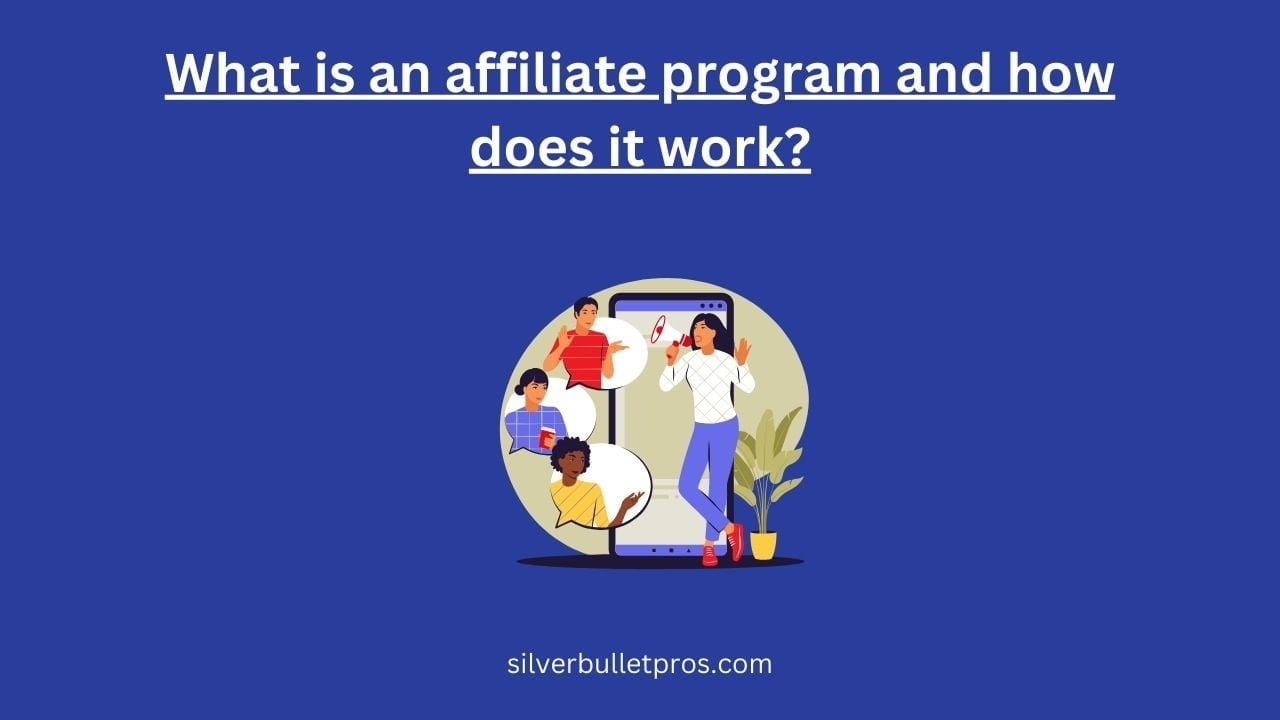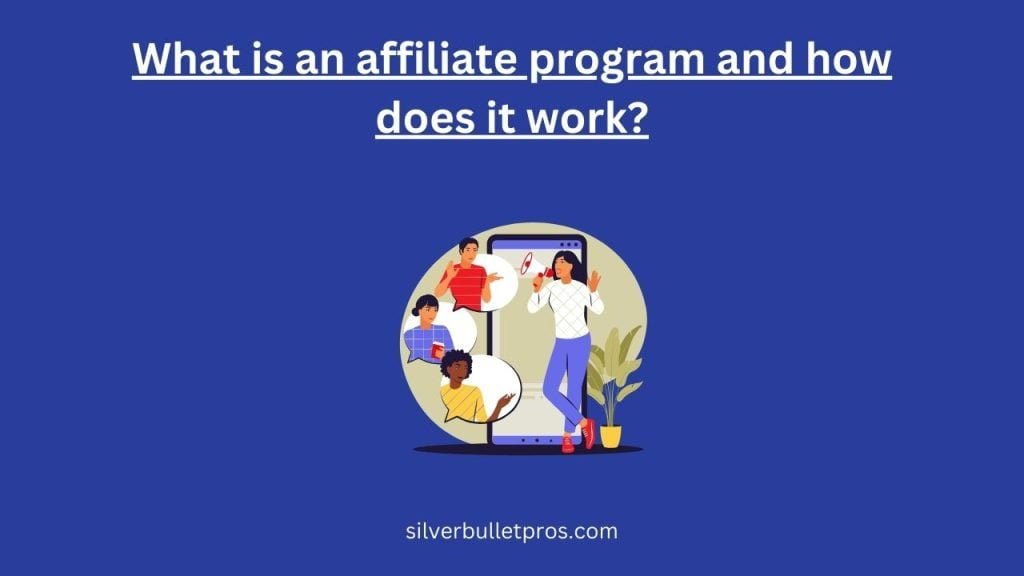

Affiliate marketing is a performance-based marketing strategy where businesses reward affiliates for driving sales or leads to their products or services. An affiliate program facilitates this partnership between merchants and affiliates by providing a platform for tracking, reporting, and compensating affiliates for their promotional efforts. In this comprehensive guide, we'll dive into the ins and outs of affiliate programs, exploring how they function, the key players involved, different program types, and strategies for successful affiliate marketing.
How Does an Affiliate Program Work?
Affiliates promote products or services using unique referral links. When someone makes a purchase through these links, the affiliate earns a commission.
Affiliate programs operate on a performance-based model. Here’s a detailed breakdown:
- Sign-Up: Affiliates sign up for the program and receive a unique tracking link.
- Promotion: Affiliates share this link on various platforms like blogs, social media, or websites.
- Tracking: The link tracks clicks and sales.
- Commission: Affiliates earn a commission for every sale made through their link.
Affiliate programs use cookies to track user activity. When a user clicks on an affiliate link, a cookie is placed on their browser. This cookie tracks their actions and attributes any purchases back to the affiliate, ensuring they receive the correct commission.
Who is Involved in Affiliate Marketing?
There are three main parties in affiliate marketing:
- Merchant: Also known as the advertiser or retailer, this is the business selling the product.
- Affiliate: The promoter who earns a commission by driving traffic and sales to the merchant’s website.
- Customer: The end-user who buys the product through the affiliate link.
Example: Amazon, the merchant, offers an affiliate program where bloggers (affiliates) promote products. Customers purchase products through these links, and the bloggers earn a commission.
What Are the Types of Affiliate Programs?
There are four main types of affiliate programs:
- Pay-Per-Sale (PPS): Affiliates earn a commission only when a sale is made.
- Pay-Per-Click (PPC): Affiliates earn money for every click they generate to the merchant’s site.
- Pay-Per-Lead (PPL): Affiliates get paid for generating leads, such as sign-ups or form submissions.
- Two-Tier Programs: Affiliates earn commissions on their sales and on sales made by other affiliates they refer.
Example: ClickBank offers various types of affiliate programs, allowing affiliates to choose based on their preference and expertise.
How to Choose the Right Affiliate Program
Choosing the right affiliate program involves evaluating several factors:
- Commission Rates: Higher rates can be more profitable.
- Product Relevance: Products should align with your niche and audience interests.
- Cookie Duration: Longer cookie durations increase the likelihood of earning commissions.
- Reputation: The program should be reputable and reliable.
Example: If you run a tech blog, partnering with programs like Best Buy or Newegg can be highly effective due to product relevance and high commission rates.
What Are the Benefits of Affiliate Marketing?
Affiliate marketing offers numerous benefits:
- Low Startup Costs: Joining affiliate programs is usually free, and promotional efforts can be low-cost.
- Passive Income: Affiliates can earn money while they sleep, as commissions accumulate over time.
- Flexibility: Affiliates can choose products and marketing methods that suit their style and audience.
- Scalability: Successful strategies can be scaled up for higher earnings.
Example: According to a study, 81% of brands use affiliate marketing, showcasing its widespread benefits and potential for passive income.
What Are the Challenges of Affiliate Marketing?
Challenges in affiliate marketing include:
- High Competition: Popular niches can be highly competitive, making it hard to stand out.
- Dependence on Merchant: Affiliates rely on merchants to track sales accurately and pay commissions promptly.
- Building Trust: It takes time to build trust with an audience to drive sales.
- Compliance with Policies: Affiliates must adhere to FTC guidelines and program policies to avoid penalties.
Example: According to recent reports, 38% of affiliates face issues with merchant payments and tracking, highlighting the need for reliable partnerships.
How to Promote Affiliate Links
Promoting affiliate links effectively requires strategic placement and targeting:
- Social Media: Share links on platforms like Facebook, Instagram, and Twitter.
- Blog or Website: Integrate links within high-quality content, reviews, and tutorials.
- Email Marketing: Send targeted email campaigns with affiliate links.
- Offline Methods: Use business cards, brochures, and direct conversations.
How to Promote Affiliate Links on Social Media
To promote affiliate links on social media:
- Create Engaging Content: Share informative and engaging posts that incorporate affiliate links naturally.
- Use Stories and Videos: Platforms like Instagram and YouTube are great for visual and interactive content.
- Leverage Hashtags: Use relevant hashtags to increase visibility.
Example: A beauty influencer on Instagram can share a tutorial featuring makeup products and include affiliate links in the post and bio.
How to Promote Affiliate Links on a Blog or Website
For effective promotion on a blog or website:
- Write Product Reviews: Detailed reviews help build trust and provide valuable information.
- Create Tutorials: Step-by-step guides that include affiliate links.
- Use Banners and Widgets: Place these in strategic locations to catch visitors’ attention.
Example: A tech blogger can write a comprehensive review of the latest smartphone, including affiliate links to retailers.
How to Promote Affiliate Links Through Email Marketing
To use email marketing for affiliate links:
- Build a Subscriber List: Collect email addresses through lead magnets like free ebooks.
- Segment Your Audience: Tailor emails based on audience interests and behaviors.
- Craft Compelling Emails: Write engaging subject lines and content that include affiliate links.
Example: A fitness coach sends a newsletter with workout tips and affiliate links to recommended supplements.
How to Promote Affiliate Links Offline
Promoting affiliate links offline includes:
- Networking Events: Share your expertise and provide business cards with affiliate links.
- Workshops and Seminars: Host events and include affiliate links in handouts.
- Printed Materials: Use flyers and brochures that feature your affiliate links.
Example: A home improvement expert can distribute flyers with affiliate links to recommended tools and materials.
How to Build an Audience for Affiliate Marketing
Building an audience involves:
- Content Creation: Produce high-quality, valuable content consistently.
- Engagement: Interact with your audience through comments, messages, and social media.
- SEO: Optimize your content for search engines to attract organic traffic.
Example: A food blogger can build a loyal audience by consistently sharing delicious recipes and engaging with readers through comments and social media.
How to Create an Affiliate Marketing Campaign
To create an effective campaign:
- Set Clear Goals: Define what you want to achieve, such as a specific number of sales or leads.
- Choose the Right Products: Select products that resonate with your audience.
- Develop a Content Plan: Outline the types of content you will create and the platforms you will use.
- Track Performance: Use tools to monitor clicks, conversions, and earnings.
Example: A fashion blogger sets a goal to generate 100 sales in a month by promoting seasonal clothing items through blog posts and Instagram stories.
How to Track and Measure Affiliate Marketing Results
Tracking and measuring results is crucial:
- Use Analytics Tools: Tools like Google Analytics and affiliate dashboards help track performance.
- Monitor Key Metrics: Track clicks, conversions, and earnings.
- Adjust Strategies: Analyze data to identify what works and make necessary adjustments.
Example: An affiliate marketer uses Google Analytics to track the performance of blog posts with affiliate links, adjusting content based on high-performing keywords.
How to Get Paid Through Affiliate Marketing
Payment methods vary:
- Direct Deposit: Funds are transferred directly to your bank account.
- PayPal: A popular and convenient option for receiving payments.
- Checks: Some programs offer payment via mailed checks.
Example: Amazon Associates offers multiple payment options, including direct deposit, PayPal, and checks, allowing affiliates to choose their preferred method.
How to Become a Successful Affiliate Marketer
Becoming successful involves:
- Learning Continuously: Stay updated with industry trends and best practices.
- Building Relationships: Network with other affiliates and industry experts.
- Providing Value: Focus on helping your audience with valuable content.
- Being Persistent: Success requires time and consistent effort.
Example: Pat Flynn, a renowned affiliate marketer, emphasizes the importance of authenticity and providing value to the audience, which has contributed to his success in the industry.
In conclusion, affiliate marketing offers immense potential for earning passive income, but it requires strategic planning, continuous learning, and persistent effort. By understanding how affiliate programs work, choosing the right program, and promoting effectively, anyone can become a successful affiliate marketer.
What is the definition of an affiliate program?
An affiliate program is a marketing arrangement where a company pays commissions to third-party publishers (affiliates) for driving sales or leads to their business.
How do affiliates earn commissions or get paid?
Affiliates earn commissions by promoting a company's products or services on their website, social media, or other channels. They typically get paid a percentage of the revenue generated from each sale or lead they refer.
What are the benefits of joining an affiliate program?
The primary benefits include the ability to earn passive income, access to a wide range of products to promote, and the flexibility to work from anywhere. Affiliates don't have to create their own products or handle customer service.
How can I find and join legitimate affiliate programs?
Research popular affiliate networks like Amazon Associates, ShareASale, or CJ Affiliate. Many companies also have their own in-house affiliate programs listed on their websites. Be cautious of programs that require upfront fees or make unrealistic income claims.
What are the best practices for successful affiliate marketing?
Best practices include choosing products relevant to your audience, providing honest and valuable content, building an email list, leveraging multiple traffic sources, and consistently tracking and analyzing your performance.